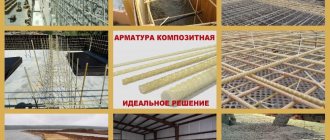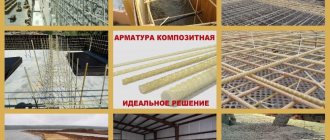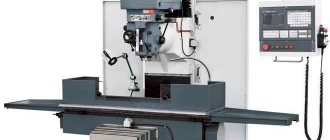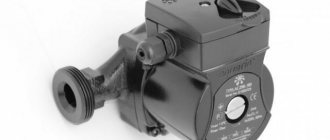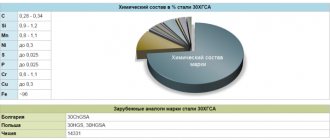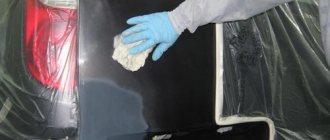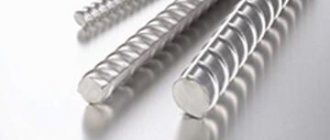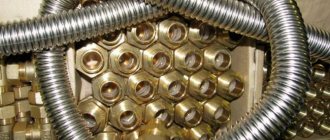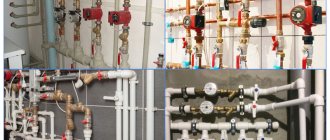High-quality, correctly selected fittings are the key to the reliability and durability of any constructed structure. Popular varieties include A2 fittings, also known as A300. Its use increases the strength and reliability of constructed concrete structures. For what reasons is this type of fittings in such demand?
What is she like?
To begin with, class A2 fittings are made from specially designed steel. Two brands are used for this. Firstly, St5sp(ps) is a carbon steel of ordinary quality, used in the manufacture of reinforcing bars and in riveted structures. Secondly, ST18G2S is a low-alloy steel used in the manufacture of welded structures. The ability to assemble a structure from metal rods is extremely important. It is undesirable to weld most analogues, as this leads to a decrease in the strength and durability of the finished structure. You have to use a special knitting wire, which holds the rods in the desired position, but does not give the frame high strength. However, the use of a special grade of steel allows us to solve this problem, obtaining a high-quality and durable frame.
Diameter may vary. Today it is produced with a diameter from 10 to 80 millimeters, depending on the grade of steel used for its production. Rods with a thickness of 12 millimeters or less can be supplied in coils, which simplifies storage, transportation and use. The thicker ones are metal rods of various sections.
The difference between class A3 reinforcing steel and class A1
These types of reinforcing steels, manufactured in accordance with GOST 5781-82, have four main groups of differences:
- Dissimilar surface profiles
- all diameters A1 (∅6 mm÷∅40 mm) are manufactured SMOOTH, without longitudinal and transverse grooves. A3, on the contrary, has two longitudinal ribs and projections along helical lines between them. - Various steel grades
are used for production : A3 is made from low-alloy steels with the addition of manganese (35GS, 25G2S), manganese and boron (32G2Rps). For the production of A1, carbon steels (without alloying additives) St3kp, St3ps, St3sp are used. - Various mechanical characteristics
.
| Reinforcement class | Yield strength kgf/mm² | Relates. length % | Bending test (c - thickness of the post, d - ∅ reinforcement) |
| A-I(A240) | 24 | 25 | c=d |
| A-III(A400) | 40 | 14 | c=3d |
- The areas of application differ.
A3, thanks to its corrugated surface, has excellent reinforcing properties and is used for reinforcing concrete structures for various purposes in the construction of monolithic buildings and structures made of reinforced concrete (in contrast to smooth A1, which is suitable for reinforcement only in certain, special cases, for example, cylindrical reinforcement cages , for road reinforcement). But class A1 reinforcement is more in demand in the manufacture of auxiliary metal structures (excluding highly loaded ones).
Sources
- https://spbrmk.ru/klassy-i-marki-stali-armatury/
- https://armaturniy.ru/arm/vidy/klassy-armatury.html
- https://tutmet.ru/armatura-klassa-a1-xarakteristiki-osobennosti-profilya.html
- https://www.mirmt.ru/metalloprokat/armatura-a1/
- https://www.balashiha.z-felix.ru/armatura/a3/
- https://metallicheckiy-portal.ru/articles/prokat/armatyra/armatura_klassa_a3-ee_osnovnie_xarakteristiki_osobennosti_i_primenenie
- https://www.atlantmetall.ru/company/spravochnik/armatura/a3/
Where is it used
Due to the excellent properties of the reinforcement, it can be used in a wide variety of construction areas:
- construction of private and multi-storey houses;
- construction of bridges, dams, dams;
- laying the road surface;
- construction of warehouses, hangars, industrial premises.
Almost every construction site uses this material, which has won the trust of experienced specialists.
In addition to the cases listed above, metal rods are widely used in the production of reinforced concrete slabs in factories. The high strength of the material allows it to be used in the manufacture of conventional reinforced concrete products (reinforced concrete products), as well as prestressed ones. The latter are more difficult to manufacture - the reinforcement is subjected to tension, after which the mold is filled with mortar. The hardened concrete is held in place by a tension rod, and the finished product is able to withstand high bending and tensile loads.
You can often hear another name from experts - A300. Indeed, the brand of fittings A2 is completely identical to A300. There are no differences in purpose, properties and material used in their manufacture. This will be useful to remember for every person involved in construction.
Such a wide scope of application is one of the main advantages of reinforcement, which has made it such a popular building material.
Marking
Hot-rolled steel reinforcement A1 in the international classification is marked as A240.
The number in the name indicates the fluidity coefficient of the steel used for production multiplied by ten. For example, A 240 - coefficient 24 kgf/mm.sq., for A400 - 40 kgf/mm.sq. The higher the value, the stronger the steel, the more stress the rod can withstand before it begins to deform.
Any type of fittings can be subjected to additional temperature treatment, in which case the letters “At” are added to the end of the marking. If the metal is free of impurities and has a uniform distribution of carbon, the symbol “C” is added to the abbreviation, and when copper is added to the composition, the symbol “K” is added to improve the anti-corrosion properties.
Why does the profile shape differ?
When working with this material, every observant person will notice that the shape of the rods varies. Products with ring, crescent and mixed profiles are available for sale. You should pay attention to this - the main purpose of the rods depends on the shape.
Profile types: 1 – ring; 2 – sickle-shaped; 3 – mixed.
For example, a ring profile provides better adhesion - finished reinforced concrete products will be able to bear bending loads without harm. The crescent profile gives reinforced concrete high tensile strength. The mixed reinforcement profile is the newest of those listed - it appeared on sale relatively recently. It combines the advantages of both types of reinforcement, but the high cost narrows the scope of use - it is usually used only in cases where the increased strength of reinforced concrete products is important - in the construction of dams and bridges.
Reinforcement profile shape A300 according to GOST.
How to determine the diameter?
The most important parameter is the diameter. It determines what load it can withstand, its ductility limit and a number of others. Therefore, when designating the brand of reinforcement, its diameter must be indicated. The entire classification is as follows: A200 D30. It is the last number coming after the letter D or the symbol Ø that shows the thickness of the rod.
Some meticulous buyers, when choosing a suitable material, check its actual thickness with that indicated in the passport using a caliper. They are often surprised by a serious discrepancy - the difference can be several millimeters. However, it is worth considering that with a periodic section (that is, the presence of ribs on the rod), it is impossible to measure the nominal diameter. In narrow places it will be less than the specified value, and on the edges it will be more. Therefore, experts use the average value. Its characteristics are indicated in the tables.
Manufacturing method
However, the characteristics listed above are not the only ones. It is equally important to know the manufacturing method. Today, hot-rolled and cold-drawn manufacturing methods are used. The performance characteristics of the material, as well as the scope of application, depend on this.
They are easy to distinguish upon external examination. Cold-drawn rods have a smoother surface - there are no differences. Possessing increased plasticity, they are able to withstand enormous loads without harm to themselves.
Hot rolled ones have slight changes in diameter. This is primarily due to the fact that it is impossible to heat the entire mold and steel to the same temperature, at least in factory conditions. However, the differences are minimal and the finished material fully complies with all GOST requirements. In addition, the finished material has a lower cost, which allows you to reduce costs when purchasing fittings.
As you can see, A2 fittings have a number of important advantages that make it a good choice in a number of cases. Understanding its parameters and having an idea about the most popular varieties, you can easily choose the material you need.
A400 and A500 fittings according to GOST 34028-2016
GOST 10884-94 and GOST 5781-82, discussed above, are things of the past. Both designated documents were replaced by GOST 34028-2016, created on the basis of GOST R 52544-2006. We'll talk about it further below.
So, now A3 reinforcement is designated only by its yield strength, that is, as A400 reinforcement. This also can conditionally include such a type of long products as A500 reinforcement. The main direction of use is still the same - reinforcement of prefabricated and monolithic reinforced concrete structures. Let’s say right away that in practice the scope of application is much wider. We will consider this issue in a little more detail below.
As before, the reinforcing bars we are considering are now of periodic profile. That is, the same A3 corrugated reinforcement, but with a different sauce, the name only indicating the yield strength.
Reinforcing bars of periodic profile
We hope the title is clear. Now for the assortment. The release form is the same - skeins and rods. The delivery of rods can be carried out in measured, unmeasured or measured lengths with unmeasured lengths. Their length is from 6.00 to 18.00 meters, unmeasured length is from 6.00 to 12.00 m. The length is agreed upon in the order and may be different. Delivery in coils is carried out with a nominal diameter of rolled products up to 22.00 mm (previously A3 reinforcement up to 10.00 mm).
Please note that rentals differ depending on the type of profile (4f, 1f, 3f, 2f). The differences are in the height of the transversely located ribs, their pitch, angle of inclination, total, total distance between the two ends. The profile shape is specified in advance when ordering. In short:
- 1f – two ribs placed longitudinally, there are transverse ribs with an inclination to the axis, annular type of section, equal to the thickness of the half rings;
- 2f - distinguished by a crescent-shaped cross-section of ribs located longitudinally on 2 sides, opposite to each other along the perimeter;
- 3f – no ribs placed longitudinally, transverse crescent ribs, placed evenly on 3 sides, along the perimeter;
- 4f – there are no ribs placed longitudinally, there are ribs with a segmental cross-section placed transversely symmetrically on 4 sides.
Special properties
Also, fittings are distinguished by purpose. In relatively rare cases, a metal rod must have a number of properties that make it suitable for the application. This is achieved in different ways - by adding special impurities to the alloy or by special processing. In any case, the fittings acquire unique characteristics. The presence of special properties is indicated by the letter at the end of the encoding. The following designations are usually found:
- C – weldable. Usually, when assembling a frame from reinforcement, the use of welding is extremely undesirable - overheating reduces strength and, in addition, reduces resistance to corrosion. But there is a special metal that contains additives that increase its ability to withstand negative consequences;
- K – resistant to corrosion. Thanks to special additives (chrome, tungsten and others), the fittings are able to work for many years not only in conditions of high humidity, but also in contact with an aggressive environment - alkaline, acidic, with a high oxygen content;
- SK is a reinforcement that has both of the above properties. It has a high cost, so it is used relatively rarely, only when the usual one cannot cope with difficult operating conditions.
Of course, there is a special GOST for this product that imposes special requirements on it.
